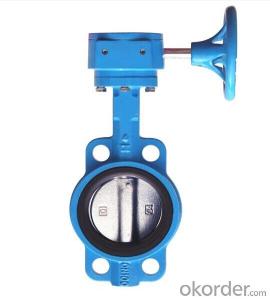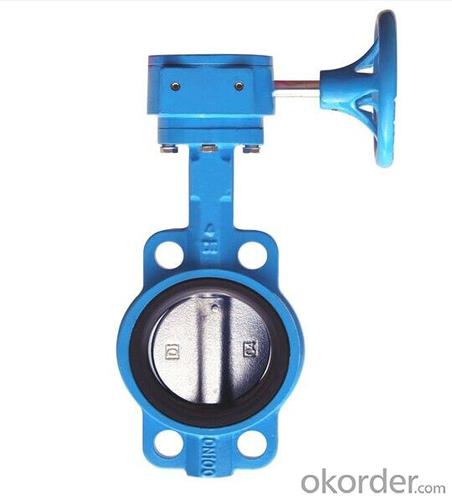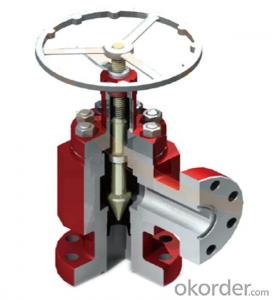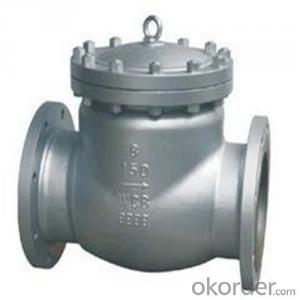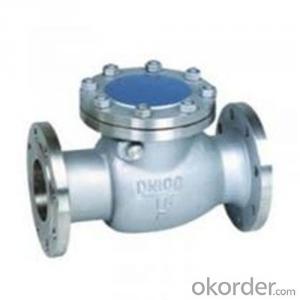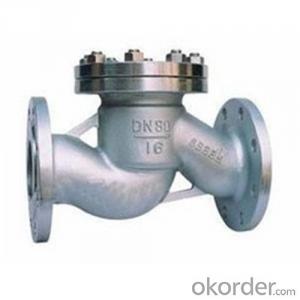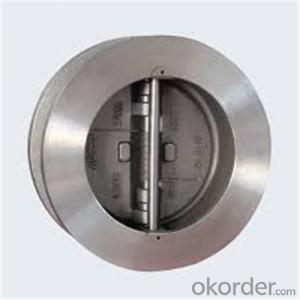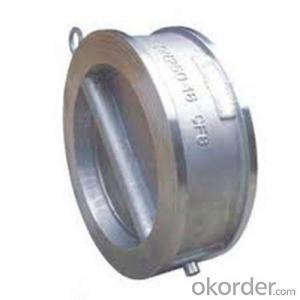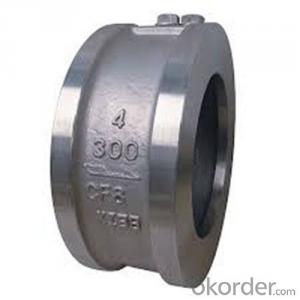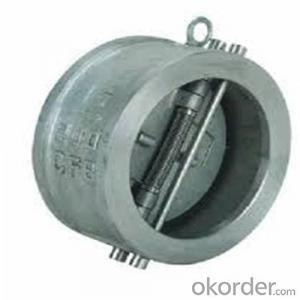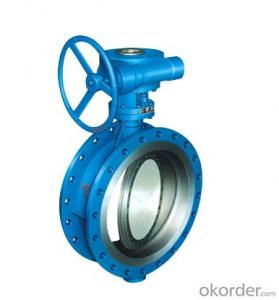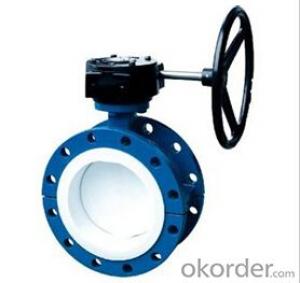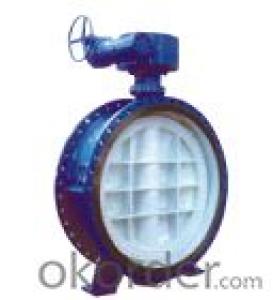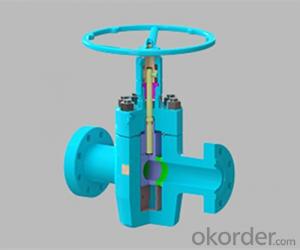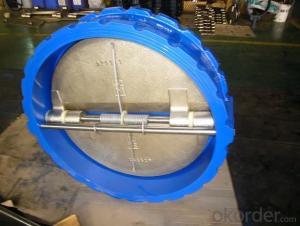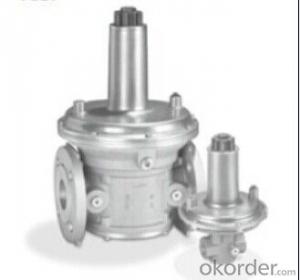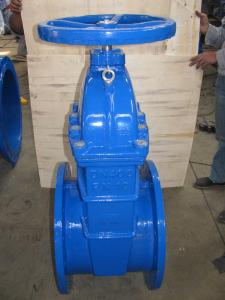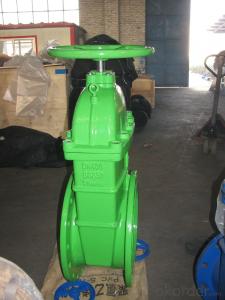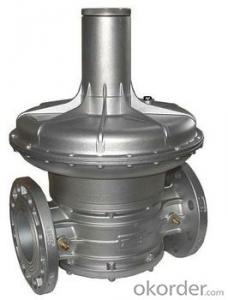Turbine Type Butterfly Valve DN450 with Hand Wheel BS Standard
- Loading Port:
- China main port
- Payment Terms:
- TT OR LC
- Min Order Qty:
- 100 set
- Supply Capability:
- 50000 set/month
OKorder Service Pledge
OKorder Financial Service
You Might Also Like
1. Manual Wafer Butterfly Valve Description:
A butterfly valve is a valve which can be used for isolating or regulating flow. The closing mechanism takes the form of a disk. Operation is similar to that of a ball valve, which allows for quick shut off. Butterfly valves are generally favored because they are lower in cost to other valve designs as well as being lighter in weight, meaning less support is required.
2.Main Features of the Manual Wafer Butterfly Valve
1. Small in size and light in weight, easy instillation and maintenance. It can be mounted wherever needed
2. Simple and compact construction, quick 90 degrees on-off operation
3. Minimized operating torque, energy saving
4. Flow curve teeing to straight line, excellent regulation performance
5. Long service life, standing the test of tens of thousands opening/closing operations
6. Bubbles-tight sealing with no leakage under the pressure test
3. Manual Wafer Butterfly Valve Images: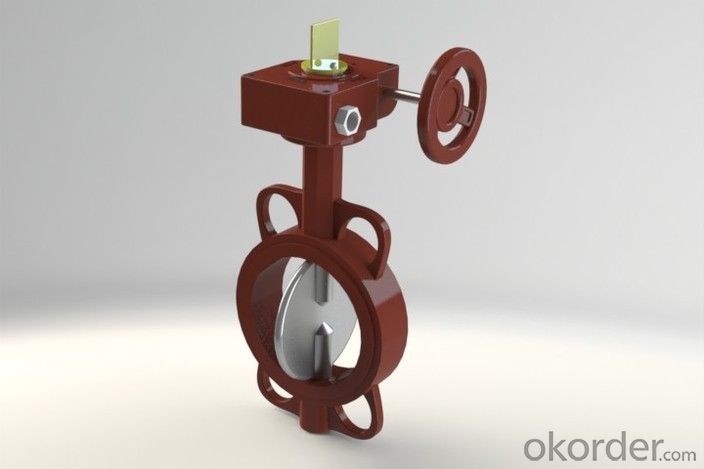
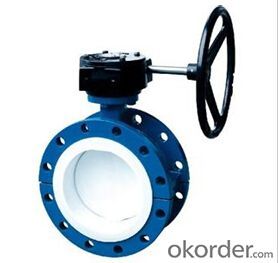
4.Manual Wafer Butterfly Valve Specification:
Size: DN50-DN1000
End flange: ANSI B 16.1,EN1092,AS2129
Face to face: ANSI B 16.10
Top flange: ISO 5211
Normal pressure: PN1.0/1.6MPa(150/200PSI)
Body: CI/DI/WCB/ALB/CF8/CF8M
Disc: DI/ALB/Rubber lined Disc/1.2501/1.4529/CF8/Hastelloy Alloy/Monel
Stem: 410/416/304/431/17-4PH/316/monel
Seat: NBR/Hypalon/EPDM/Neoprene/NR/Wear-Resistant EPDM/Viton/Silicon/Heat-Resistant EPDM/White 5.FAQ
1. What is manual wafer butterfly valve?
A: Wafer style is the more common of the two and is less expensive than the lug style. The wafer style butterfly valve is just about the standard. It ís so common that no one even bothers to use the word "wafer" when ordering a butterfly valve. It is taken for granted that if a butterfly valve is ordered, a wafer style will be received.
2. What is the working principle of manual wafer butterfly valve?
A: A butterfly valve is from a family of valves called quarter-turn valves. In operation, the valve is fully open or closed when the disc is rotated a quarter turn. The "butterfly" is a metal disc mounted on a rod. When the valve is closed, the disc is turned so that it completely blocks off the passageway.
- Q: hi im 13 years old and i am having my tricuspid valve repaired or replaced the doctors do know what they are going to do yet.what is the success rate of the operation ?and whats the survival rate of the operation ?all other info would be appreciatedthanksalex
- The okorder /
- Q: non-return valves
- ..?..non-return valves..? I will assume that your 'non-return valves', are what is also known as check valves. Check valves allows flow in one direction only. These are used wherever you need to prevent backflow into the system, or to maintain a charged circuit with fluid, until you choose to unload(depressurize ) it. Now, why are they used in discharged lines of salt water, basically to prevent backflow....reason not known, here , requires usage info.
- Q: When and why do you need to get a valve job? My car has 85k miles on it. What is the difference between a valve-job and valve-adjustment? what would the increase in power be on mine? 3800 series 2 engine, assuming it is just a little old, no major problems. 5-10hp?
- MOST modern engines have hydraulic lifters, which pretty much eliminates the need to have any periodic valve adjustments. You can take stock heads to a shop and put two grand into them and make better flow and bigger valves and more power, or actually buy a set of performance heads for less and make more power. the only time your valves would need to be set is when putting together a new engine, or taking apart the one you have and replacing say a head gasket or something. (in which case you would have a shop go through the heads and make sure they are up to factory specs. If your engine is running fine, and you have kept the oil clean and the motor in good tune, follow the recommended maintenance intervals in your owners manual. a valve adjustment is not going to give you horsepower.
- Q: We have an ejector in the basement for an in-law apartment. When the check valve kicks in, it can wake us up from a sound sleep. A very loud thunking. Any ideas?
- the check valve would be installed just outside of the crock vertically. The noise I doubt is from the check valve itself. I'd guess it is the pump shutting off and the pipe isn't fastened securely, so it bangs. Check to make sure that the run of pipe leaving the crock is fastened securely. if this is the case the only other option I oculd think of would be to re-position the check valve on a horizontal run of pipe as close to the crock as possible. Most check valves I have seen for ejectors are compression type, it will be messy but not to complicated. Keep a bucket handy, when you crack open that check valve you may need it. Flush the toilet until the pump kicks on a few times, this should clear out most of the nasty stuff. You may also need a short piece of 2 pipe and some couplings to make up for the space of the check valve. If you can hear the water flowing out when the pump kicks on and don't hear it draining back into the crock when it shuts off, the check valve is probably still good.
- Q: i bought thie air connector kit and it has y-valves, suction cups and air control valves, what are the air control valves for?
- If theres a power outage the water won't go through the tube and into the air pump.
- Q: I am doing a big project on Valve and it's games. I am currently doing some research on the company and wanted to see if anyone had any interesting facts or information about Valve that may be useful when doing research, thank you. :)
- Google can help
- Q: I have a 2001 Ford Ranger with a 4.0 V6. I recently broke the valve cover bolt on the top right hand corner of the passenger valve cover ( the bolt closest to the belt). 1. Can I drive it like this and since 7 of the 8 bolts are in it should it leak worse. 2. How do I fix it, and 3. How much would this cost to have fixed if I took it somewhere. Thanks for your help
- Valve Cover Bolts
- Q: i have a 04 kia sadona i have been having issues with the van overheating someone told me to open the bleeder valve and let it drain then refill leave the valve open and if i see bubbles in the radiator than its a blown head gasket. is this true? is there a bleeder valve on this and if so where is it located? its not on the thermostat housing i allready replaced the thermostat.
- Remove the radiator cap when cold and run the engine. Have someone rev the engine while the transmission is in park (with the parking brake ON), and you watch in the top of the radiator for bubbles. It may take a few seconds from the time they rev till the bubbles rise to the top.
- Q: My fortuner stalls without warning, but restarts quickly, according to Toyota service center, we need to replace the suction valve, can someone please tell me how a suction valve work
- you need to be more specific. there are 100 things on a car that could be called a suction valve. Right off the top of my head the only valve that could do that is a EGR valve. If it gets stuck open the car will stall, but it will start back up after the valve closes again. The OBD will tell you if the EGR valve is bad, but other than that I can't say.
- Q: Its a 1981 Monte Carlo SS with a GM 350 crate motor. There is oil all over the heads valve covers. It isn't my car, but I was thinking of buying it..Thank you.
- If my reasoning is correct.. the answer is all to obvious.. the oil spot saturation is caused by none other than Loki, god of mischief and mayhem. If you could kindly point me in the direction of my half-brother I would be more than happy to hit him with my big dumb hammer. -THOR
Send your message to us
Turbine Type Butterfly Valve DN450 with Hand Wheel BS Standard
- Loading Port:
- China main port
- Payment Terms:
- TT OR LC
- Min Order Qty:
- 100 set
- Supply Capability:
- 50000 set/month
OKorder Service Pledge
OKorder Financial Service
Similar products
Hot products
Hot Searches
Related keywords
